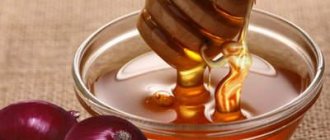Description and types of disease
Modern experts distinguish several classifications of hemorrhagic vasculitis: according to clinical signs and according to the course of the disease.
According to its manifestations, the pathology is divided into:
- Renal. It occurs as glomerulonephritis.
- Skin. It occurs more often than other types, is externally similar to thrombocytopenia, but clinically has nothing to do with it.
- The articular one, which is most often combined with the skin one, is characterized by swelling and painful sensations in the joints.
- Abdominal. Affects the intestines, possibly intestinal bleeding and intestinal perforation.
- Mixed, which is a combination of several clinical forms of pathology.
Based on the severity of the disease:
- mild clinical course;
- moderately active process;
- high degree of manifestation of pathology.
These varieties are currently the main ones. When making a diagnosis and prescribing therapy, it is very important to determine these characteristics.
Causes of hemorrhagic vasculitis
To date, traditional medicine has not yet identified clear prerequisites for this pathology. However, there is a basic theory according to which vasculitis develops against the background of infectious processes.
In addition, many experts identify the following factors that provoke the formation of purpura:
- taking medications (antimicrobials, reducing blood pressure);
- insect bites;
- sudden and intense hypothermia of the body;
- vaccination;
- drug allergies;
- genetic predisposition.
The mechanism for the development of pathology is the formation of immune complexes deposited on the walls of capillaries and venules and subsequently leading to their damage and inflammation.
Symptoms of the disease
For successful treatment of vasculitis, timely diagnosis is of great importance, so you need to know the main symptoms and, if they occur, immediately contact a specialist.
Clinical signs of this disease are divided into five main groups: skin, articular, abdominal, renal and others.
Skin symptoms include:
- the occurrence of small hemorrhages appearing above the surface of the dermis;
- in the area where the hemorrhage occurred, pronounced pigmentation remains, most often in obvious darkening of the skin.
Articular manifestations:
- pain in large joints;
- inflammation, swelling and swelling;
- the dermis over the joints changes color initially to red, gradually turning into blue.
Such symptoms persist for no more than 7 days.
We recommend reading: Multiple sclerosis: causes and treatment at home
Abdominal signs include:
- pain in the navel area;
- pain, manifested by attacks, during which the person turns pale and feels weak. The attack is easier to bear if the patient lies on his side and pulls his legs towards his stomach;
- vomiting, loose stools, which usually contain blood streaks.
The list of renal syndromes includes:
- the appearance of blood in urine;
- increase in blood pressure;
- swelling in the morning, especially characteristic of the face.
The clinical picture also includes the following symptoms:
- chronic fatigue and decreased performance;
- noise in ears;
- dizziness and pain;
- fainting;
- intense shortness of breath and increased heart rate after minor exertion.
If the above symptoms occur, you should consult your doctor. Lack of or prolonged treatment can lead to serious complications. Among them: chronic renal failure, intestinal obstruction, peritonitis, pulmonary hemorrhage and mesenteric vascular thrombosis.
Panniculitis: symptoms
The clinical picture of Beber-Christian panniculitis is characterized by the appearance of nodular formations located in the subcutaneous fat. Most often, these nodules are localized on the legs and arms, less often in the abdomen and chest. After regression of the inflammatory process, foci of atrophy of fatty tissue remain, which look like rounded areas of skin retraction.
According to its course, panniculitis can be:
- Sharp;
- Subacute;
- Recurrent.
Idiopathic panniculitis may be accompanied by a disturbance in the general condition, namely the appearance of symptoms of acute respiratory viral infections, headache, fever, arthralgia, muscle pain, nausea and vomiting. The visceral form of panniculitis is characterized by systemic damage to fat cells throughout the body with the development of pancreatitis, hepatitis, and nephritis. It is the acute form of this disease that is characterized by a pronounced change in the homeostasis of the human body. Despite the treatment, the patient's condition progressively worsens. Within a year, the disease is fatal.
Traditional treatment
The main goal of vasculitis therapy is to restore the activity of affected organs and suppress abnormal reactions of the immune system.
The treatment complex, as a rule, includes several components at once.
- In any form of pathology, there is a limitation of motor activity.
- Compliance with a special diet.
- Taking antibacterial drugs.
- The use of glucocorticoids - such drugs are anti-inflammatory in nature and prevent the formation of allergic reactions.
- The use of anticoagulants aimed at stabilizing skin rashes and reducing pain.
- Infusion therapy is the injection of drugs to remove harmful substances.
In severe cases of pathology, surgical intervention may be used if a section of the intestine has died. However, with timely treatment, complications of this nature practically do not appear.
How to treat vasculitis
Vasculitis is an autoimmune reaction to human tissue due to inflammatory processes in the walls of blood vessels.
The disease affects various vessels - large veins and arteries, small venules and arterioles.
Depending on which vessel is affected, arteries, phlebitis, arteriolitis and capillaritis are distinguished, but in practical medicine such a division is rarely made, combining the pathology into vasculitis.
The name of the disease includes pathological processes of different types, but all of them are characterized by such features as disruption of normal vascular circulation and tissue necrosis.
Vasculitis can be primary or secondary, arising against the background of some pathology, for example, diabetes mellitus.
Establishing the correct diagnosis and connection with other pathologies is extremely important in order to know how to treat vasculitis and how to counteract the worsening of the symptoms of the disease.
Vasculitis affects both large vessels and small ones. When deep veins and arteries are affected, signs of vasculitis may not appear for a long time, but vasculitis on the body and limbs gives characteristic red spots that do not go away. However, damage to any vessels leads to serious consequences, so vasculitis must be treated as soon as possible.
When signs of vasculitis appear, many patients do not know where to treat the disease or which specialist to contact. If vasculitis is suspected, a consultation with a phlebologist – a vascular specialist – is indicated. The attending physician will examine the patient, and if the diagnosis is confirmed, it is he who will guide the patient further. Consultations with a therapist, dermatologist, rheumatologist, and infectious disease specialist are possible.
Mild vasculitis is usually treated on an outpatient basis, but in severe forms, patients must be hospitalized. Doctors also insist on hospitalization of children, pregnant women, patients with hemorrhagic vasculitis and vasculitis in the initial stage in order to observe the dynamics of the pathology.
The duration of therapy depends on the degree of the disease. If the disease is stopped at an early stage, then treatment can take about two months, moderate severity is treated for about six months, and severe vasculitis must be treated for about a year or more.
Drug treatment of hemorrhagic and allergic vasculitis
Doctors give encouraging forecasts in the treatment of the disease only in the initial stage of its development, when therapy brings tangible results. Unfortunately, advanced vasculitis is difficult to treat. With the help of patients with this pathology, several fundamental issues are resolved:
We recommend reading:
How to cure knee pain
- achieving stable remission of the disease;
- shortening the relapse period;
- prevention of necrotic changes in tissues;
- prevention of complications;
- increasing the quality of life and its duration.
Conservative therapy for vasculitis involves systemic long-term treatment of the disease. Eliminating the symptoms of pathology alone is too little to consider the patient healthy. Is it possible to cure vasculitis? This is a question asked by patients who are faced with a similar diagnosis for the first time.
Unfortunately, even with modern technologies, it is not possible to completely slow down autoimmune processes, since this entails other, more serious complications.
However, vasculitis is not a death sentence, although it is practically incurable. If detected at an early stage, vasculitis can be controlled if you follow all the recommendations of doctors.
The most important thing for patients suffering from vasculitis is to achieve long-term remission so that the symptoms of the pathology worsen as rarely as possible.
In the treatment of pathology, immunosuppressive drugs are mostly used.
These are drugs that suppress the immune system, preventing it from destroying its own body cells. Since when the immune system is suppressed, the body is defenseless against various infectious pathologies, glucocorticosteroids and cytostatics are prescribed in parallel with immunosuppressants.
Prednisolone and Dexamethasone remain one of the most commonly prescribed drugs for vasculitis. Thanks to the action of these medications, swelling of tissues and blood vessels is eliminated, and the risk of ischemic syndrome is significantly reduced.
In the acute phase, a loading dose of these drugs is given, and the dosage is calculated individually.
But if maintenance therapy is necessary, small doses of the drug can prolong the period of remission and prevent destructive processes in the vascular walls.
In the group of cytostatic drugs, Cyclophosphamide has a good effect in the treatment of vasculitis. The same drug is a component of chemotherapy for cancer, since the mechanisms of development of pathological changes are largely similar.
If the disease is severe, therapy with Cyclophosphamide is supplemented with Prednisolone. In parallel, patients should take drugs to dilate the lumen of blood vessels - these are Complamin, Dicynon, Venoruton, Prodectin or nicotinic acid.
To avoid blood clots, Curantil, Heparin, Fraxiparin, and Trental will be useful.
Thrombosis with vasculitis in vessels of any caliber is an extremely serious complication of the pathology
If vasculitis has an allergic etiology, then desensitizing agents are added to the above remedies, for example, injections of calcium chloride every other day, antihistamines.
Among the antihistamines, Zyrtec, Erius, Claritin, Clarotadine have become widely known. The drugs are selected strictly individually, since standard dosages do not help all patients.
The previously used Diazolin and Suprastin are practically not recommended today, since their effect is extremely weak.
Simultaneously with drug treatment of vasculitis of an allergic nature, patients must follow a diet and remove those foods that are allergens for them.
It is worth considering that allergens can be not only food, but also medications. For example, vasculitis can be caused by Lincomycin, Ceporin, Erythromycin.
In this case, doctors decide to discontinue these drugs and prescribe analogues.
When treating with immunosuppressants, it is very important to carry out maintenance therapy. Therefore, doctors prescribe vitamins - rutin, ascorbic acid, biotin.
Treatment regimens for various degrees of pathology severity
It is necessary to treat angiitis of varying severity according to different schemes. The first degree of severity of the disease is characterized by vascular damage and the appearance of superficial symptomatic pigment spots.
The skin is affected to a limited extent by small rashes, in which the temperature does not rise, and there is no muscle or joint pain.
A blood test in the first degree of damage gives normal values, with the exception of the erythrocyte sedimentation rate, which is increased.
For patients suffering from this type of disease, non-steroidal anti-inflammatory drugs are indicated, among which are Nimesulide, Indomethacin, Meloxicam. Antibacterial drugs for the treatment of the disease are Doxycycline, Ciprofloxacin, Azithromycin.
To destroy microbes, quinolines are indicated - Chloroquine, Hydroxychloroquine, and Desloratadine, Levocetirizine, Fexofenadine are indicated as antihistamines.
In the second degree of severity of the pathology, the patient’s condition is characterized by a significant deterioration. The skin is no longer affected locally, but everywhere.
The body temperature exceeds low-grade fever, and the blood test shows that most indicators exceed the acceptable limits. Patients suffer from weakness, muscle and joint pain, and neuropathy.
At this degree of the disease, the treatment regimen is more complex; a larger number of drugs from different groups are prescribed.
Patients are prescribed systemic glucocorticoids - Betamethasone, Prednisolone, and to reduce the harmful effects of these drugs on the body, proton pump inhibitors are used, among which Omeprazole is important. As with mild cases, patients should take Nimesulide, Doxycycline or Meloxicam. Antibacterial drugs for patients with severe vasculitis are Azithromycin, Ofloxacin and Amoxicillin.
Antibiotics are essential drugs in the treatment of vasculitis
The drugs Pentoxifylline, Anavenol, Diosmin, Hesperidin are indicated as angioprotectors. Among antihistamines, doctors recommend Cetirizine, Ebastine, Levocetirizine. To remove toxins, the drug Dextran is used.
Local treatment of vasculitis
External treatment of the skin surface for vasculitis is based on the use of ointments and creams to improve the condition of blood vessels. These include Troxevasin, Troxerutin, Iruksol, Solcoseryl. Dimexide applications are useful.
For the first degree of skin damage, it is enough to use ointments Betamethasone, Mometasone furoate, Methylprednisolone aceponate.
The second degree of skin damage should be treated with such agents as Levomekol, Solcoseryl, Dexamethasone, Actovegin.
If wounds occur, it is recommended to treat vasculitis on the legs, arms and body with two percent silver sulfathiazole. Trypsin and Chymotrypsin lotions will be useful.
Additional methods of treating vasculitis
In addition to conservative medication, doctors try to help patients with vasculitis in various other ways. Recently, in the treatment of pathology, not only drugs have been used, but also additional treatment methods, such as plasmapheresis, UV irradiation of blood and hemoxygenation - saturation of the blood with oxygen.
Extracorporeal hemocorrection gives positive results in the treatment of vasculitis. Thanks to this technique, it is possible to cleanse the patients’ blood of various toxic substances and allergens that cause vasculitis. During hemosorption, the blood is purified using sorbents.
To do this, blood is taken from a vein and passed through filters in a special apparatus that contain sorbents. Thus, the blood is cleansed and returned to the patient’s bloodstream.
After the procedure, the health of patients significantly improves, blood circulation and nutrition of even the most remote areas of tissue are stimulated.
With the help of hemosorption, patients can achieve long-term remission
Immunosorption is a type of such therapy. The principle of the procedure is the same, but the blood is cleansed with an immunosorbent, which removes from the blood its own antibodies and complexes that provoke self-destruction of the walls of blood vessels.
With plasmapheresis, patients undergo blood purification by separating plasma and blood. Blood cells are returned to the bloodstream with part of the donor plasma, and then their own purified plasma is introduced, undergoing purification through the membrane.
Diet for vasculitis
It is important for patients suffering from vasculitis to limit their diet, in particular, to eliminate from the diet all foods that can cause inflammation or worsen the patient’s condition.
Doctors pay special attention to correcting nutrition - you need to eat six times a day in small portions so that the body has time to process the incoming foods and remove their breakdown products.
To do this, the amount of fluid intake per day must be at least two liters (if the kidneys are not affected). In order to improve urine flow, salt intake is limited.
With vasculitis, patients are largely deprived of calcium reserves. To replenish it, fermented milk products with low and medium fat content will be useful. And in order not to provoke potassium deficiency, you need to eat dried fruits - raisins, prunes and dried apricots. These products may only be prohibited if the patient is diagnosed with kidney failure.
Steamed dishes are recommended for consumption, especially vegetables, milk porridges, boiled lean fish and meat, eggs, berries and fruits in any form. Alcohol, coffee, strong tea, canned food, fried, sour and spicy foods are prohibited.
Treatment with folk remedies
Many experts do not deny the use of alternative medicine recipes, considering them an excellent addition to the main treatment. It should be noted that the use of such methods must be approved by the attending physician, since self-therapy often harms the body and leads to progression of the disease.
Decoctions and tinctures
A special place in the folk treatment of vasculitis is given to decoctions and tinctures.
- Infusion with alcohol. Alcohol is considered one of the most effective components in the treatment of this pathology. To prepare this recipe, you need to mince 3 lemons and add 5 tbsp. l dried cloves, 400 g sugar, 500 ml vodka. Mix and leave in a dark place for two weeks. The resulting product is drunk daily, 1 tbsp. l before meals.
- Elder flowers, nettle leaves, knotweed and yarrow are mixed in equal proportions. After which 1 tbsp. l of the collection is poured with boiling water, left for an hour, filtered and taken 3 times a day, 200 g.
- The following decoction helps fight allergic reactions that occur with vasculitis. 3 tbsp. l lingonberries, tricolor violets, strings are thoroughly mixed and crushed. 1 tbsp. l of the resulting powder is poured with a glass of boiling water, left for an hour, and taken three times, 200 g each during the day.
- This method can only be used to treat adults. Add 1 tbsp to a glass of boiling water. l black elderberry flowers. Next, the broth is placed in a water bath for a quarter of an hour, cooled, filtered and another 100 g of boiling water is added. The decoction is taken cooled three times a day before meals.
- The next no less effective collection: arnica, Japanese sophora and calendula, which are thoroughly mixed in equal quantities. After which 1 tbsp. l of the mixture is poured with a glass of boiling water, left for 3 hours. Use 2 tbsp every 8 hours. l.
We recommend reading: Symptoms and treatment of herpes zoster at home
These tinctures and decoctions are an effective addition to the main treatment, increasing its effectiveness several times.
Ointments
The following recipes allow you to combine traditional and alternative medicine.
- It is necessary to mix 50 g of pharmaceutical ointment Iruksol and 50 g of melted resin. Leave this product in a dark place for 24 hours. Then use it externally on the affected areas.
- Approximately 20 g of Solcoseryl is mixed with 70 g of ground birch buds. Mix thoroughly until smooth and infuse for 7 days. This remedy is one of the most effective because it not only heals the dermis, but also has an anti-inflammatory effect.
Compresses
The next way to combat the disease is to use compresses.
- Resin based. To prepare this product, 200 g of resin is heated in a water bath, then 50 g of beeswax and 40 g of vegetable oil (preferably unrefined) are added. Mix the components until smooth, cool and apply as compresses to areas affected by the disease. It is recommended to keep it for 24 hours.
- 3 tbsp. l string, yarrow, tricolor violet are mixed, add 200 g of boiling water, leave for an hour. After which the soft cloth is moistened in this decoction and applied to the sore spots. It is recommended to do this compress at night.
- Tincture of horse chestnut fruit, sold in any pharmacy under the name aescusan, is mixed with 200 g of boiled water. A compress is made from the warm broth, which is applied to the affected areas for 12-15 hours.
Such remedies are very effective and allow you to quickly cope with the disease.
You may be interested in an article about treating herpes zoster at home.
There is also a useful article about treating mumps with folk remedies.
Here you will learn how to treat urticaria in adults and children.
Herbal ointments
Plant-based ointments are included in a separate category.
- 200 g of dried, or better yet fresh, birch buds are passed through a blender. So that the kidneys take on the appearance of a mush, after which approximately 500 g of nutria fat is added and mixed thoroughly. The resulting mixture must be placed in a clay dish and kept in the oven for 2-3 hours. Repeat languishing for 7 days. Next, the ointment can be applied to the damaged areas.
- The next remedy for external use is an ointment based on fragrant rue. 30 g of vegetable collection is mixed with 150 g of homemade butter. Place in a glass container and put in the refrigerator for a week. Then apply until completely absorbed onto the affected areas.
We recommend reading: What is opisthorchiasis: treatment at home
Important! Such recipes are used only for external use.
Medicinal plants
Almost any folk remedy for the treatment of vasculitis contains one or another medicinal plant. Herbs and other natural ingredients can be collected yourself.
Even if you don’t have the opportunity to collect it yourself, pharmacies always have ready-made products. Most often, decoctions and various tinctures are made from them, subsequently used in the form of baths, compresses or orally.
Treatment of vasculitis of the lower extremities is carried out with the help of black elderberry infusion. To prepare it, take 1 tablespoon of finely chopped inflorescences, which must be simmered over low heat for 10-15 minutes, pouring one glass of boiling water. Then the liquid is removed from the heat and infused for half an hour under the lid. After this, another 1 cup of boiling water is added. The decoction is placed in the refrigerator and consumed before meals.
Angiitis (inflammation of blood vessels) is also treated with hawthorn. 1 tablespoon of crushed parts of the plant is poured with 1 glass of boiling water and left for 12 hours. The resulting liquid is filtered through cheesecloth and consumed in an amount of 100 ml twice a day, approximately 1 hour before meals.
Ginkgo Biloba extract is common in modern medicine and is used as a folk remedy. To make a decoction, take 2 tablespoons of dried, finely chopped leaves of the plant. Place the component in a saucepan, add 1 glass of water, and cook over low heat for 5 minutes. Strain the broth, cool and take 1/3 cup before meals for 30 days.
Another effective treatment for vasculitis is bergenia. The plant reduces inflammation and restores the walls of blood vessels. To prepare the decoction, take a tablespoon of dried bergenia root. Pour 1 cup of boiling water and place in a water bath for 30 minutes. The liquid is filtered and the required amount of boiling water is added to obtain approximately 200 ml of decoction. Take the product three times a day, 2 tablespoons.
Diet for illness
Particular attention in the treatment of vasculitis is paid to nutrition. The patient must strictly follow a number of recommendations that have a beneficial effect on the effectiveness of therapy.
- With vasculitis, the patient has a calcium deficiency. To replenish it, you need to include low-fat fermented milk products in your diet. In addition, there is a significant lack of potassium. You can fight it with dried fruits.
- To replenish immunity, fresh or steamed vegetables and fruits are added to the menu.
- In addition, the diet should include: lean fish and meat, milk porridges, pureed soups, and protein-rich foods.
- To reduce the load on the stomach, it is forbidden to eat fried, fatty and spicy foods. All dishes must be ground.
- Prohibited foods include: alcohol, salt, fatty meats, intense seasonings.
If the patient has renal failure, products with potassium are prohibited.
These rules are of a general nature; a patient with hemorrhagic vasculitis is prescribed an individual diet based on the form, stage of the disease and the individual characteristics of the body.
How to make an appointment for a limb examination
To sign up for a duplex scan of the arteries and veins of the extremities at the Health Workshop, you need to call the call center or fill out the form. The cost of a duplex is from 1800 rubles. We also perform Doppler ultrasound of the vessels of the upper and lower extremities.
Before the examination, we advise you to undergo an examination by our doctor. This is a free service and is included in the cost of scanning. At the appointment, the doctor will examine you, ask about your symptoms and give you a referral. This will help the ultrasound specialist make a more accurate diagnosis.
Prevention of vasculitis
In order to prevent the development of this pathology, it is necessary to follow a number of simple rules.
- Timely treatment of infections found in the body from caries to various types of viral diseases.
- Balanced intake of medications. Refusal of self-medication therapy.
- Absolute exclusion of hypothermia.
- Harmonious physical activity without overexertion.
- Strengthening the immune system.
If a disease occurs, it is necessary to follow recommendations for the prevention of complications: comprehensive and competent treatment, giving up bad habits.
Hemorrhagic vasculitis is an acquired pathology that, if not treated correctly, leads to serious complications. To prevent them, it is necessary to know the clinical picture of the disease and start treatment in a timely manner.
We bring to your attention a video that describes folk remedies for the treatment of hemorrhagic vasculitis:
Folk remedies for the treatment of varicose veins that are offered to us today
Decoctions, tinctures, compresses, ointments based on natural ingredients, also include green tomatoes, extracts of garlic and lemon, freshly squeezed juices, dope seeds, in general, the list can be continued for a very long time.
Preparation of miracle cures for varicose veins
Of all the suggestions on the Internet, in the absence of corresponding contraindications, I personally would recommend the following: tequila with lime or a glass of good whiskey. You won’t cure varicose veins, but at least you will forget about it for a while! At the same time, the use of “effective” traditional medicine means, at best, postponing a visit to a specialist. Hence, loss of valuable time. The lack of adequate treatment for varicose veins always leads to the development of complications. The progression of edema, darkening of the skin, the appearance of ulcers and the development of thrombosis are an integral part of the pathogenesis of varicose veins and the life of a person who denies himself modern treatment.
Even today, trophic ulcers are treated with this method.
Traditional medicine in past times was the only thing that could somehow help a person with various diseases. Sometimes such treatment alleviated the condition, sometimes, on the contrary, it aggravated the situation. The lack of alternatives and formalized knowledge about diseases, including venous ones, forced our ancestors to use various gifts of nature for medical purposes. Speculative reasoning and even recommendations for the treatment of varicose veins with folk remedies in the 21st century look ridiculous, and the consequences of such treatment can be negative and even fatal.











